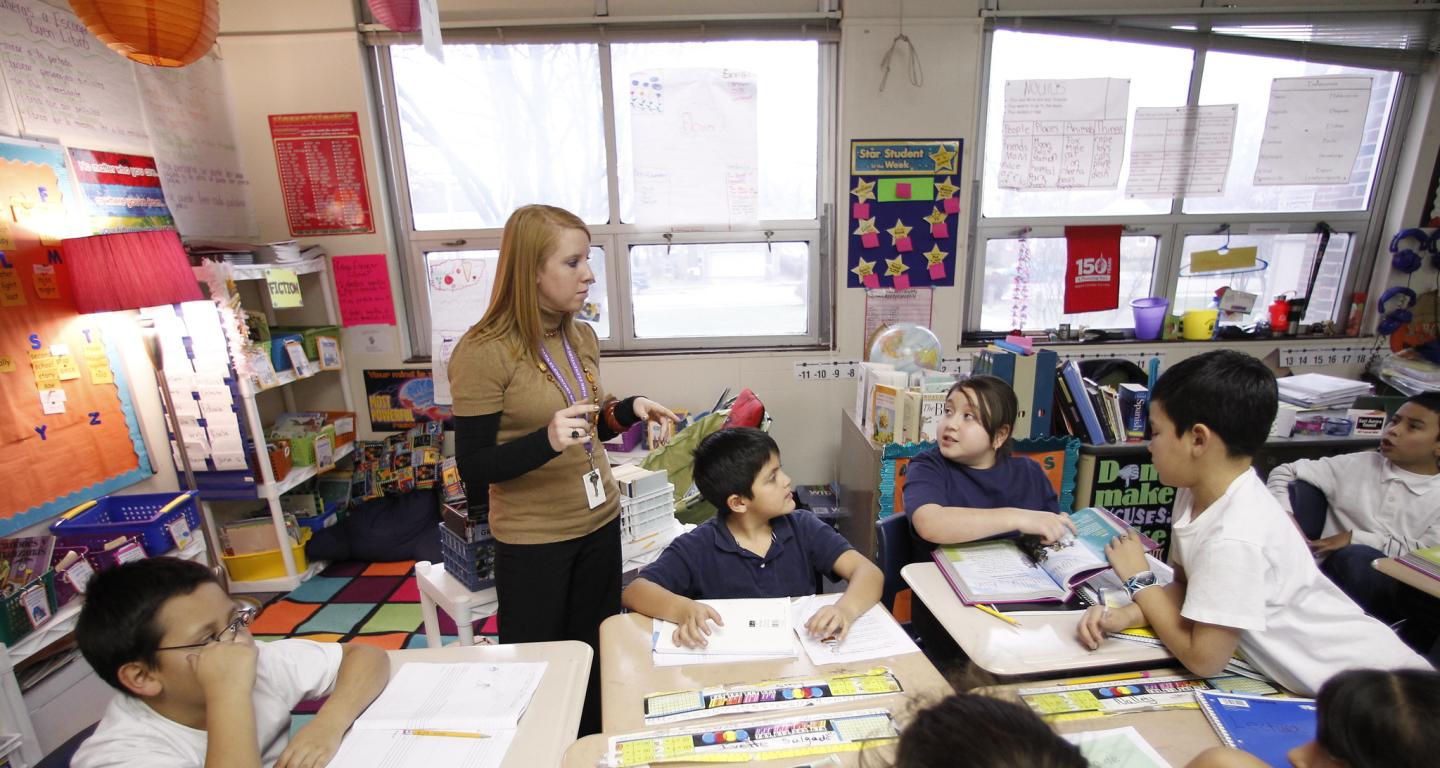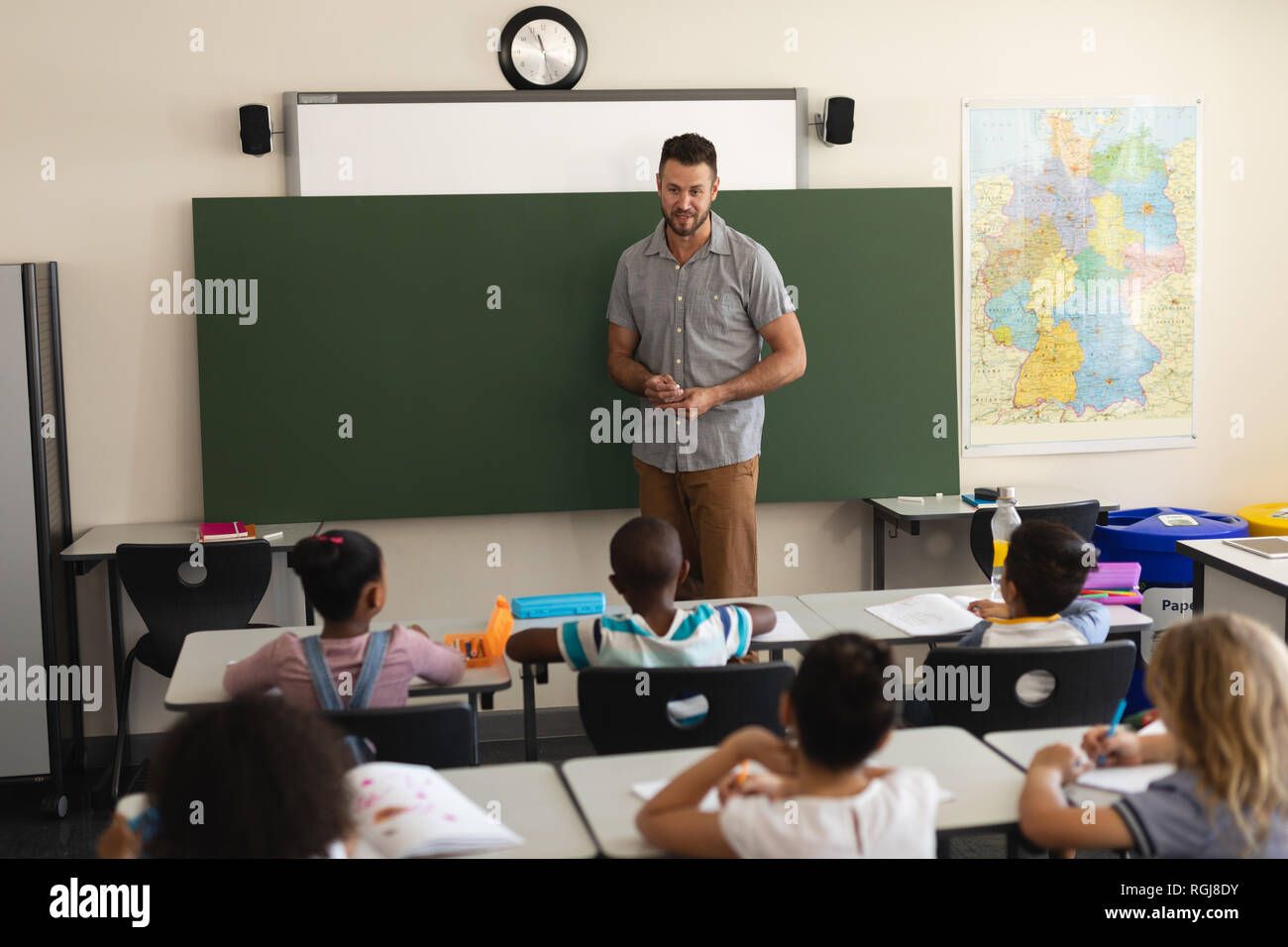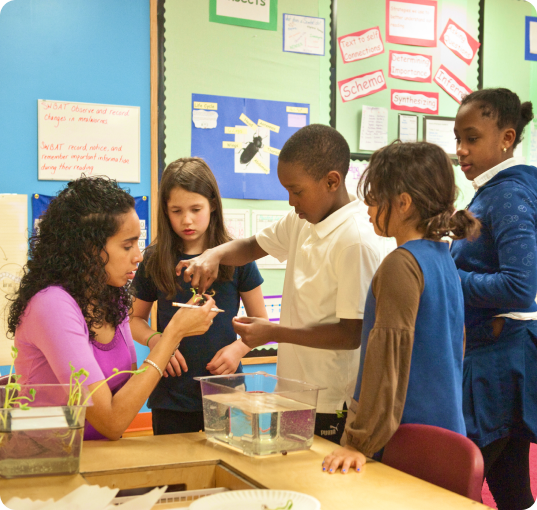Find the Best Primary Science Tuition Singapore for Enhanced Learning
Find the Best Primary Science Tuition Singapore for Enhanced Learning
Blog Article
Discovering the Different Training Techniques in Main Science Education Today
Inquiry-based understanding, hands-on experiments, and the assimilation of modern technology are redefining just how instructors involve young minds. In addition, joint approaches and differentiated instruction are being employed to cater to the diverse needs of pupils, enhancing both engagement and understanding.
Inquiry-Based Knowing
Inquiry-Based Knowing (IBL) is a pedagogical technique that urges pupils to discover clinical principles through questioning, investigation, and hands-on experimentation. This approach stresses the role of students as energetic participants in their learning, promoting crucial reasoning and analytic abilities. By involving with real-world inquiries, trainees become motivated and interested, which boosts their understanding of scientific principles.
In IBL, educators serve as facilitators, guiding pupils as they navigate their inquiries instead than delivering details directly. This student-centered approach enables differentiation, accommodating different learning designs and speeds. Students establish skills in creating hypotheses, making experiments, and assessing data, which are essential for clinical literacy.
In addition, IBL promotes collaboration amongst students, urging them to share searchings for and ideas. This cumulative inquiry advertises social skills and a feeling of community within the classroom. The procedure of query urges durability, as pupils learn to accept failing as a stepping stone towards understanding.
Hands-On Experiments
Hands-on experiments are a vital element of reliable science education and learning, complementing the principles of inquiry-based learning. These experiments permit trainees to engage straight with scientific concepts, fostering a much deeper understanding through experiential learning. By manipulating products and observing end results, young students can understand abstract theories in concrete methods.
Such tasks advertise critical thinking and analytic skills, as trainees assume outcomes, conduct experiments, and assess outcomes. This process motivates them to ask inquiries, improve their understanding, and establish a clinical state of mind. Moreover, hands-on experiments can be customized to varied understanding styles, making sure that all pupils have the possibility to engage meaningfully with the material.
Moreover, hands-on experiments typically urge collaboration amongst peers, advertising teamwork and communication abilities. Functioning in groups enables pupils to share concepts, discuss searchings for, and pick up from one another, which boosts their total educational experience.
Including hands-on experiments into the key scientific research educational program not only enriches the finding out atmosphere but also grows a long-lasting rate of interest in science. By proactively taking part in their education, students are more probable to establish an interest for scientific query that prolongs beyond the class.

Innovation Integration
Incorporating innovation right into primary scientific research education has actually come to be significantly vital in fostering trainee involvement and enhancing finding out end results. Using electronic tools, such as interactive simulations, online laboratories, and instructional software, supplies trainees with chances to check out scientific concepts in innovative ways. These resources help with a deeper understanding of complicated subjects by enabling students to picture and manipulate variables that would be unwise in a standard classroom setup.
Additionally, technology combination urges personalized discovering experiences. Trainees can progress at their very use this link own speed, reviewing challenging ideas through multimedia resources, which satisfy various discovering designs. This flexibility not only supports individual development however also grows a feeling of autonomy in students.
In addition, modern technology offers as a bridge to real-world science, attaching trainees with current research and specialist payments. Access to online databases and clinical journals expands students' viewpoints on clinical questions and cultivates vital believing abilities.
Collaborative Learning
Joint knowing plays a vital duty in key science education by fostering teamwork and communication abilities amongst trainees. This technique encourages learners to collaborate, share expertise, and participate in analytic, which enhances their understanding of scientific ideas. By joining team tasks, pupils learn to articulate their concepts, listen to diverse point of views, and work out services, every one of which are vital skills in both real-world and scholastic contexts.

Study suggests that collective learning can cause increased motivation and involvement in science topics, as trainees locate enjoyment in shared experiences (primary science tuition Singapore). In addition, this method prepares students for future joint undertakings, furnishing them with the article source skills needed for efficient teamwork in college and specialist environments. Ultimately, welcoming collective discovering in main science education and learning can considerably improve the understanding experience and promote a much deeper understanding of clinical questions
Separated Direction

Distinguished Click This Link guideline can manifest in various means, such as varying the material, procedures, or products of discovering. As an example, teachers might make use of tiered projects that supply differing degrees of complexity, enabling students to operate at their particular preparedness degrees. Additionally, flexible grouping methods can promote collaboration among students with different abilities, promoting peer understanding.
Assessment plays a critical role in this method, as it notifies direction and assists instructors recognize each pupil's unique needs. Formative assessments, such as quizzes and observations, can guide teachers in readjusting their techniques to boost finding out end results. primary science tuition Singapore. Inevitably, by applying set apart instruction in primary science education and learning, instructors can grow a much more equitable and effective understanding atmosphere, equipping all students to reach their complete possibility in recognizing scientific phenomena
Verdict
In recap, the diverse training approaches in key scientific research education, consisting of inquiry-based discovering, hands-on experiments, innovation combination, collaborative understanding, and separated guideline, jointly add to a more reliable discovering environment. These approaches promote crucial thinking, analytic skills, and a much deeper comprehension of clinical concepts. By applying these methods, instructors can develop encouraging and appealing classrooms that resolve the diverse needs of trainees, inevitably fostering a lifelong interest in scientific research and enhancing academic success.
Inquiry-Based Knowing (IBL) is an instructional method that urges students to discover clinical principles via doubting, investigation, and hands-on experimentation.Collective knowing plays a crucial duty in main scientific research education by promoting team effort and interaction abilities amongst trainees.Study indicates that collaborative understanding can lead to raised motivation and interaction in scientific research topics, as pupils discover pleasure in common experiences.In promoting a comprehensive discovering atmosphere, distinguished instruction arises as a key method to fit the diverse requirements and abilities of students in main scientific research education. Ultimately, by applying distinguished direction in key scientific research education and learning, educators can cultivate a more efficient and equitable knowing environment, encouraging all pupils to reach their complete possibility in recognizing clinical sensations.
Report this page